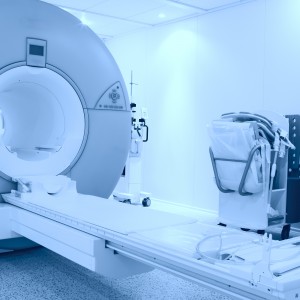 The future of radiation oncology in cancer care was recently the focus of debate involving 150 scientists from the world’s leading clinics and research institutions. Their efforts to advance radiation therapy is expected to contribute to improved cancer treatment and care in the future.
The future of radiation oncology in cancer care was recently the focus of debate involving 150 scientists from the world’s leading clinics and research institutions. Their efforts to advance radiation therapy is expected to contribute to improved cancer treatment and care in the future.
“Researchers are developing, testing, and validating new innovations, concepts, and protocols that could become tomorrow’s standards of care,” said Patrick Kupelian, MD, professor of radiation oncology and vice-chair of clinical operations and clinical research at the University of California, Los Angeles (UCLA) in a recent news release. “This symposium provided an opportunity for leaders in radiation oncology to collaborate on a wide range of topics that offer the potential to improve the precision and efficiency of cancer care with radiation oncology.”
At the symposium, which was sponsored by Varian Medical Systems, Dr. Kupelian presented his team’s work on a prototype tele-health method developed to gather evidence from patients, improving the quality and the utility of data accumulated in cancer archives.
Stereotactic Radiosurgery As A Hot Topic
Ke Sheng, PhD, associate professor of medical physics at UCLA and member of Varian’s SRS-SBRT Clinical Council, noted that future cancer treatment might be better targeted with a new approach that provides integrated and simultaneous movement of the linear accelerator and the treatment table. During the symposium, Dr. Sheng presented the findings of his research team called “4pi radiotherapy,” a new concept that involves increasing the number of beam perspectives during treatment, providing directed tumor radiation while protecting the adjacent organs and tissues.
During the symposium, other teams presented their work on innovative stereotactic radiosurgery approaches for breast, lung, pancreatic and prostate cancer.
Richard Popple, PhD, a professor of medical physics at the UAB School of Medicine in Birmingham, Alabama and a member of the Varian’s SRS-SBRT Council, presented his team’s work on new methods based on the use of 3D cameras and computer modeling to improve patient safety during treatment. This approach is of great importance, especially as it relates to 4pi radiotherapy treatments. Dr. Popple’s research work can potentially allow these high precision treatments to become standard practices outside the academic setting. “The symposium sparked conversations and discussions among researchers and Varian engineers that will help us devise solutions that can advance radiation therapy globally,” said Popple in a news release.
Knowledge-Based Treatment Planning and Quality Assurance
During the symposium, many research groups presented their work on the use of knowledge-based treatment plans to increase the speed and quality of treatment design, which is still one of radiation therapy’s most time-consuming aspects.
Martha Matuszak, PhD, assistant professor of radiation oncology at the University of Michigan, presented her team’s work on the RapidPlan model that seeks to improve and regulate the quality of radiosurgery treatment plans, particularly for spinal lesions.
Kevin Moore, PhD, an assistant professor in the Department of Radiation Medicine and Applied Sciences at the University of California, conducted a blind research study where he compared manually and automated knowledge-based treatment plans for a set of intracranial radiosurgery cases. The results revealed that experienced doctors preferred the knowledge-based plans 70% of the time, while 13% of the time they could not tell the difference between manually and automated treatments plans. “We anticipate that the ongoing development of RapidPlan treatment planning models will help to spread best practices in radiosurgery to more clinics around the world,” Moore said in a news release.
Another research team from Emory University in Atlanta presented their work in automated daily patient treatment chart checks. The team is working to test their technology that has the capacity to check all treatment parameters automatically.
“Performing chart checks manually has a number of shortfalls, such as the potential for human error and limits to the number of parameters that can be checked in a timely fashion,” said Anees Dhabaan, PhD, associate professor of medical physics at Emory University in Atlanta in the news release. “We are working to show that an automated chart check system is feasible and could offer huge potential in the improvement of quality assurance procedures in radiation oncology.”
[adrotate group=”1″]
Imaging and Motion Management
During the symposium, several research groups presented their work on imaging methods with topics involving dual-energy imaging to improve image-guided radiotherapy for lung and other cancers treatments.
Scientists from the German Cancer Research Center (DKFZ) in Heidelberg presented their work on a new technique that can create 3D images displaying both respiratory and cardiac motions, improving precision during radiation treatment.
Christopher Williams, PhD, at Brigham and Women’s Hospital presented his work on a new approach that can create a 3D image from a single 2D projection, potentially enabling internal organ motion visualization during treatment.
“Varian holds this research symposium roughly every two years, and the caliber of the presentations is quite impressive,” said Scott Johnson, PhD, director of research collaborations at Varian. “It’s a great opportunity for investigators to talk with each other, test out their ideas, and obtain useful input from colleagues. These researchers are doing very exciting work and the potential to improve cancer care with radiotherapy is tremendous.”
“The Varian Research Partnership Symposium represents a positive model of how industry and academia can work together to move cancer research forward, and to catalyze new developments that will ultimately help in the fight against cancer,” concluded Arno J. Mundt, MD, professor and chair of the Department of Radiation Medicine and Applied Sciences at the University of California, San Diego.


